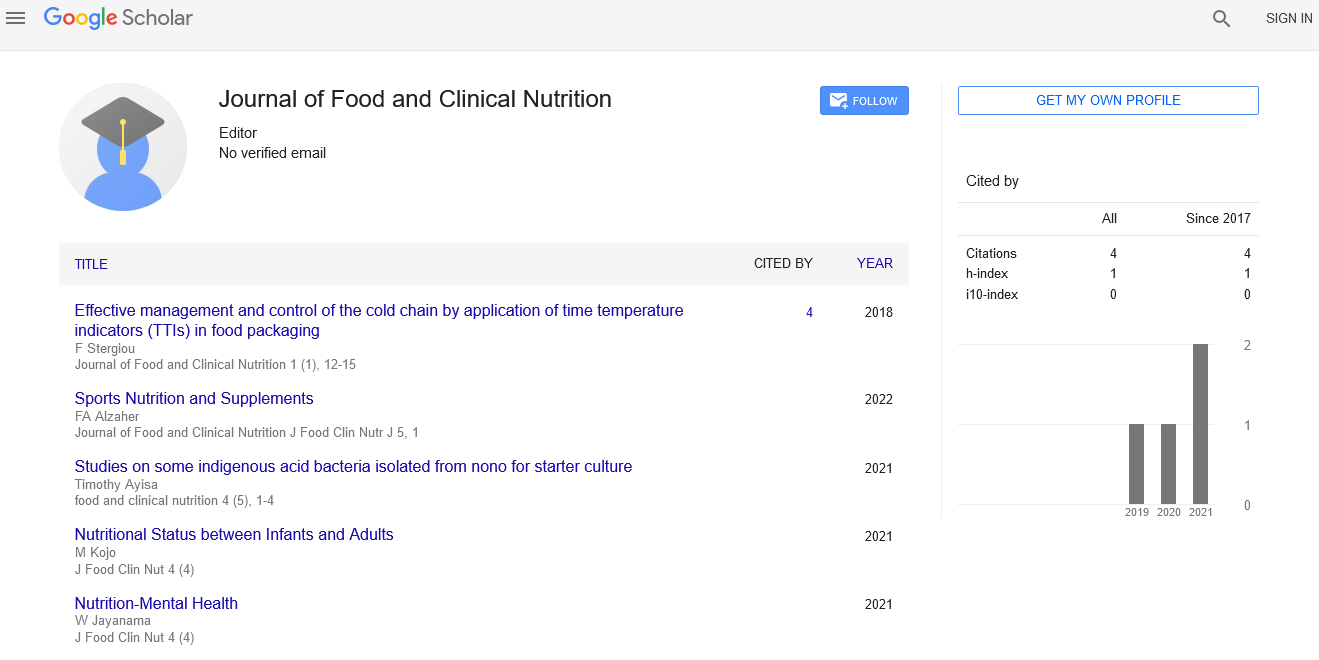Investigation of the morphological and agricultural characteristics of gvarakhutsubani wine and table breeds and the potential of wines obtained
Received: 05-Jan-2022, Manuscript No. PULJFCN-22-4761; Editor assigned: 08-Jan-2022, Pre QC No. PULJFCN-22-4761; Accepted Date: Jan 07, 2022; Reviewed: 18-Jan-2022 QC No. PULJFCN-22-4761; Revised: 23-Jan-2022, Manuscript No. PULJFCN-22-4761; Published: 29-Jan-2022
This open-access article is distributed under the terms of the Creative Commons Attribution Non-Commercial License (CC BY-NC) (http://creativecommons.org/licenses/by-nc/4.0/), which permits reuse, distribution and reproduction of the article, provided that the original work is properly cited and the reuse is restricted to noncommercial purposes. For commercial reuse, contact reprints@pulsus.com
Abstract
The examination of the morphological and agronomic features of gvara-khutsubani wine and breeds for the table, as well as the potential of wines made from them, is addressed in the paper. Cardinal, crimson sidles, black Muscat, white Muscat, and wine breeds are the product of experimental trials. All of these breed phenological phases, biometric markers, technical indicators, and yield were investigated. The potential derived from wine species is a distinctive attribute of wine produced from vine species; light yellowish, becoming dark red, rounded, fragrance and bouquet, quality increase during ageing, high stability, and therapeutic agents.
Commentary
Georgia is the origination of plants and wine. This is affirmed by Paleontological and archeological materials, the assortment of structures of the neighborhood wild plant and the boundless region in Georgia and the Caucasus, many types of the local plant. There are more than 500 breeds and polymorphoses of their natural and farming signs, unique advancements for the creation of wine items. Out in excess of 500 varieties normal in Georgia, up to 80 are from Adjara, from where many are described by rich horticultural and innovative markers. In the close past, viticulture got second spot in the economy of the internal bumpy districts of Adjara, yet because of various reasons, the advancement of this area has been halted, albeit presently the possibilities for viticulture and their advancement are obviously communicated. All the more significantly, as of late in Adjara, in the show ranch of GvaraKhutsubani, we checked the plant breeds, with the assistance of which the genetic supply of these yields in the locales will be rich. In logical writing of ongoing years, it is all the more frequently considered as a food item and naturally dynamic substances, including phenolic compounds, assume a significant part in evaluating its quality. In light of this, the investigation of phenolic compounds in the wine types of Chkhaveri, Ojaleshi, Krakhuna, Tsolikauri, Tsitska, Klardzhuli, Usakhelouri, and Aleksandrouli is critical for controlling and moving along the nature of oxidation processes. Red wine stands apart for its high natural movement. It is described by bactericidal and antitumor properties, eliminates radionuclides from the body, decreases the expansion in cholesterol, and helps the hardness of cappellars and the assortment of ascorbic corrosive in the liver. Interest assortments of hued plants, red wine is expanded because of their synthetic piece, specifically, comments, vivid substances of a polyphenolic nature, and dihydroquercetin and resveratrol. As per the writing, the polyphenol resveratrol has a place with phytoalexins, substances that are combined in enormous amounts under states of high moistness and upgrades the regular resistance of the plant against contagious, bacterial and different infections. This offers us the chance to show grape assortments with high cancer prevention agent action and to appropriate them in the exceptionally moist subtropical zone of Gvara-Khutsubani. Georgia is the origin of plants and wine. This is affirmed by paleontological and archeological materials, the assortment of structures of the nearby wild plant and the boundless region in Georgia and the Caucasus, many types of the local plant. There are more than 500 breeds and polymorphoses of their natural and farming signs, unique advances for the development of wine items. Out in excess of 500 varieties normal in Georgia, up to 80 are from Adjara, from where many are .scribed by rich farming and innovative markers. In the close past, viticulture got second spot in the economy of the inward bumpy areas of Adjara, yet because of various reasons, the advancement of this area has been halted, albeit presently the possibilities for viticulture and their advancement are plainly communicated. All the more significantly, as of late in Adjure, in the exhibition ranch of Gvara-Khutsubani, we checked the plant breeds, with the assistance of which the genetic supply of these harvests in the districts will be rich. In logical writing of late years, it is all the more frequently considered as a food item and naturally dynamic substances, including phenolic compounds, assume a significant part in evaluating its quality. In light of this, the investigation of phenolic compounds in the wine types of Chkhaveri, Ojaleshi, Krakhuna, Tsolikauri, Tsitska, Klardzhuli, Usakhelouri, Aleksandrouli is critical for controlling and moving along the nature of oxidation processes. Laurens. Red wine stands apart for its high natural movement. It is described by bactericidal and antitumor properties, eliminates radionuclides from the body, diminishes the expansion in cholesterol, and helps the hardness of cappellars and the assortment of ascorbic corrosive in the liver. Interest assortments of shaded plants, red wine is expanded because of their compound piece, specifically, explanations, beautiful substances of a polyphenolic nature, and dihydroquercetin and resveratrol. As indicated by the writing, the polyphenol resveratrol has a place with phytoalexins, substances that are incorporated in huge amounts under states of high stickiness and upgrades the regular invulnerability of the plant against contagious, bacterial and different sicknesses. This offers us the chance to show grape assortments with high cell reinforcement action and to disseminate them in the exceptionally moist subtropical zone of GvaraKhutsubani.
Key Words
Gvara-khutsubani; Biometric markers; Cardinal; Agronomic; Therapeutic agents; crimson sidles





